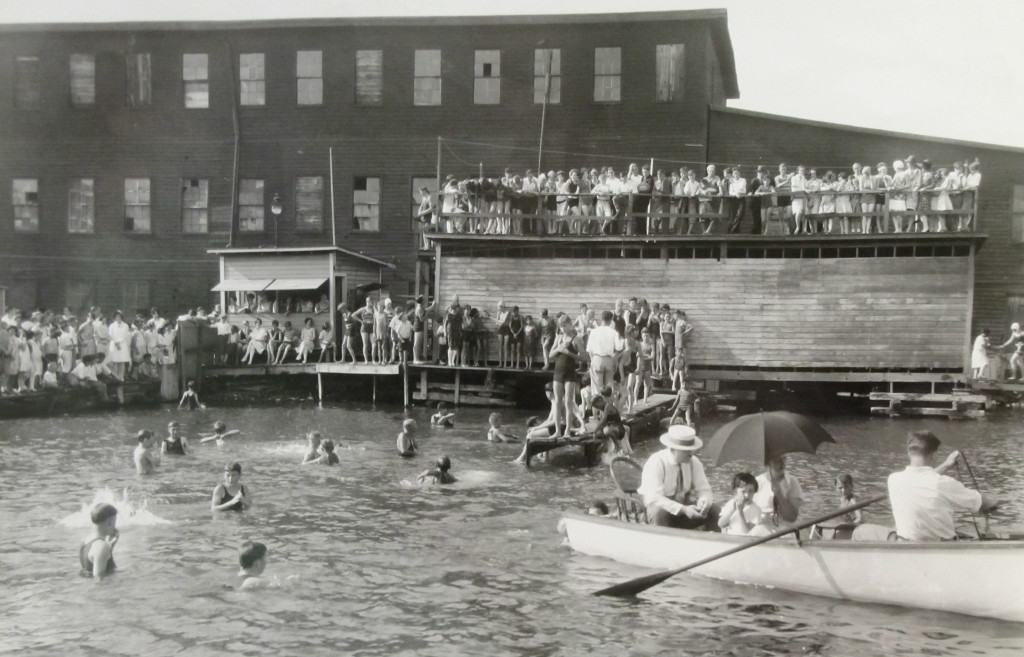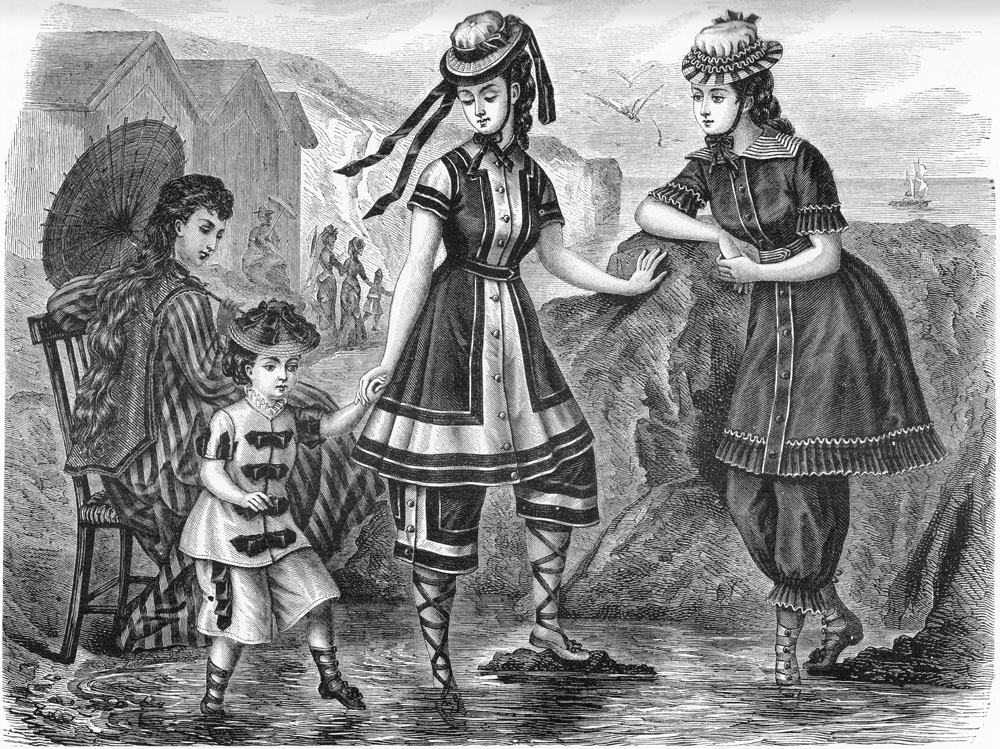Laughter, Shouts, Frolic, and Swimsuits
By Alice Askins, Education Coordinator at Rose Hill Mansion
A while back I ran across a village ordinance printed in the Geneva Daily Gazette of July 2, 1852:
No person shall bathe in the waters of the Seneca Lake, the Canal, or Castle Creek, after the rising of the sun, and before eight o’clock in the evening, within the bounds of the corporation, under the penalty of one dollar for each offence [sic]. This Ordinance will be rigorously enforced. By order, J. S. HOGARTH, Clerk.
It took me a minute to realize that this was because the bathers (all male) were nude. It turns out that similar laws date back as early as 1813, as reported in the Gazette:
Whereas, The indecent and demoralizing practice of bathing in the Seneca Lake opposite the village, and in open view of the inhabitants thereof, is improper and ought no longer to be tolerated – Therefore, Be it further ordained, That no person or persons whatever shall bathe in the said lake, between a point opposite Centre-street, which runs from the corner of the turnpike near the dwelling-house of the late Rev. J. Chapman to the said lake, and a point opposite the road leading from the turnpike near Septimus Evans’ to the said lake: – And in case any person or persons shall violate this ordinance, he, she or they shall, for every such offence, forfeit the sum of one dollar . . .
This must have been an unpopular ordinance. The papers found it necessary to remind swimmers about it in July 1835, June 1849, August 1854, July 1864, May 1871 (the fine had gone up to $5), July 1873, and September 1880. There may have been reminders that I did not find.
At some point, the intent of the original law (to protect passersby from the spectacle of naked men and boys) seems to have been forgotten. In August 1876, the Daily Gazette observed that
A large number of complaints were made on Wednesday to the Police Justice for violation of ordinance against bathing in Seneca Lake during sunlight. Among the violators were children of both sexes of residents on south Main street. None of the parties we understand were devoid of proper bathing costume. If the laws do not make distinction between persons properly clothed and those who make indecent exposures, it is time they were so amended so as to permit the luxury of bathing under proper regulations at all times.
It was not until July 1895 that the Daily Times indicated that the law had caught up with what had become common practice: “The small boys are pleased over the new ordinance allowing them to bathe in the lake when properly clothed.”
The proper clothing had developed slowly. Bathing costumes first appeared in Europe in the 1600s, for use by people taking the waters at spas. In 1737, for instance, the city of Bath, England required that men must wear drawers and a vest to enter the baths. Women were to wear shifts. Through the rest of the 1700s, bathing wear developed into something like long underwear for men, and loose gowns for women (the gowns had weights sewn into the hems so they would not float up in the water). Women’s bathing robes were made of fabric that would not become transparent or clingy when wet. Men continued to swim naked in rivers, lakes, and the ocean, and many were annoyed when England banned nude swimming in 1860. Women sometimes took to the ocean, too, but their excursions were more dipping than swimming, and they wore their robes.
In the United States regulation of such matters were left to the locals. Enforcement of the regulations was another matter and we can assume that some of the scofflaws in Seneca Lake were boys and men who did not have many extra garments. People tried to think of other solutions. The Daily Gazette reported in August 1876, that
The village authorities are about to confer a blessing on sweltering humanity by erecting board screens at convenient points on the Long Pier, by which bathers both old and young [but presumably, again, all male] may at all hours enjoy the luxury of a lake bath without exposure. We understand that Conger, Mackay & Co. have generously determined at their own expense to provide similar conveniences near their lumber yard.
By September 1886,
Extending out into the lake is a long State pier. A few years since a liberal-hearted citizen, then President of the village, Matthew Wilson, built mostly at his own expense two swimming houses for the boys and young men of the town, and the public are thus able to enjoy this most exhilerating [sic] and healthful sport. It is not . . . uncommon . . . to see a score or more of sturdy, happy urchins sporting in the water . . . a little later their strapping elder brothers come, and soon they too plunge in and manifest their delight by turning back-somersaults and other antics . . .
Meanwhile, in 1881, the Gazette reprinted a very practical suggestion from the Wayne Democratic Press – “If society ladies are shocked by seeing naked boys, let them turn their eyes in another direction.”
Still, by 1876 many of the local children were modestly equipped with bathing wear. And by the 1870s, women were starting to swim. The Daily Gazette reported in August 1873 that four women in New York City swam about 100 lengths in the East River, “with as much courage as swimmers of the sterner sex. They were attired in ordinary bathing suits.” By August 1892, we had a local female swimming “star”: “A 12-year old Penn Yan girl has distinguished herself by swimming across Keuka Lake, a distance of one and a quarter miles.” She remained modestly anonymous.
With an increased interested in exercise and fitness, swimming seems to have become more common in the years after the Civil War. Newspaper articles urged that all children learn to swim – even girls. Local stores started to advertise bathing suits and the fabric to make them out of.
What was it like, then, to swim once most folks had bathing suits and were encouraged to take to the water? In July 1882, the Geneva Courier printed the thoughts of a Philadelphia man who was traveling in Venice, Italy. He passed the Island of Sido, the favorite bathing resort of the Venetians.
. . . European seaside resorts . . . are very different affairs from our American ones. Here there is no promonading [sic] on the beach in bathing suits – or in fact at all. Here there is no rushing into the arms of the waves, men, women and children together . . . All the laughter, shouts, frolic, and in fact the pleasures of American bathing are unknown – the very sea seems subdued.
No one could say that about Seneca Lake.


